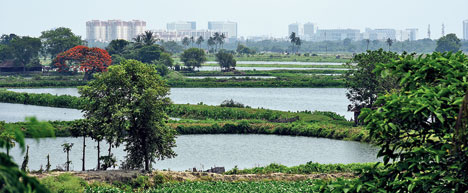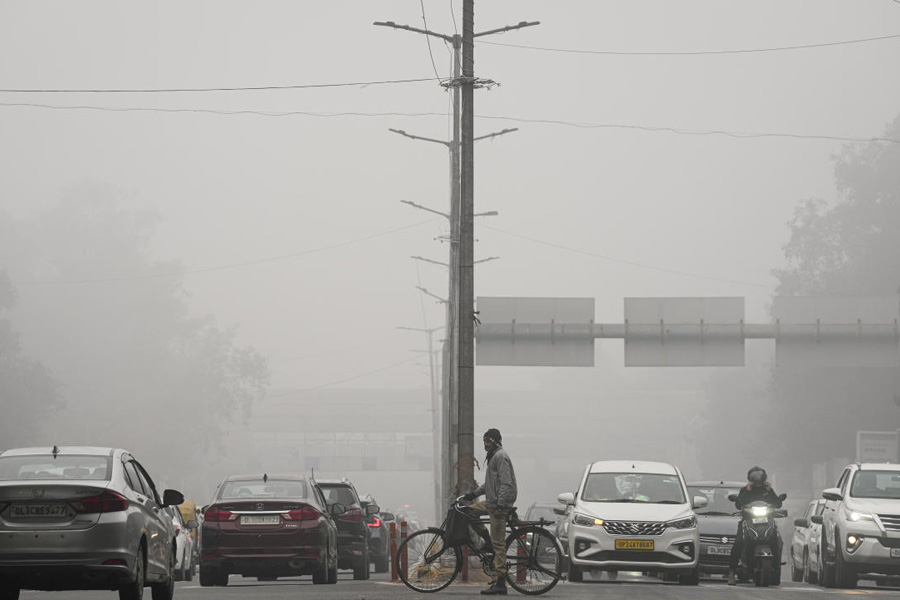
New Town: A crucial environment impact assessment has been commissioned for a road and a flyover that are to be built through the East Calcutta Wetlands, a 12,500-hectare span of water bodies regarded as the city's kidneys.
The Thane-headquartered Ultra-Tech Environmental Consultancy & Laboratory has been given four months to study air, water and soil conditions in the project area and stack those values against corresponding projections after work starts and when the infrastructure is in use.
The idea is to have a statistical picture of the potential environmental impact of these projects on the wetlands and the remedial measures that will be required.
The proposed road is meant to connect Sector V in Salt Lake with Bantala on the Basanti Highway. The flyover has been planned between Metropolitan on the EM Bypass and New Town, the state's tech hub. Both proposals have had environmental activists worried about the survival of the wetlands.
According to experts in impact assessment, starting the exercise at this time of the year makes four months inadequate for a proper study. "The guidelines of the Union ministry of environment, forest and climate change states that baseline monitoring cannot be done during the monsoon because particulate matter in the air settles down during this period," an engineer said.
A senior official of Ultra-Tech said the strongest impact of construction would be on air quality. Dust particles settling in the water bodies can affect the marine ecosystem as well.
"The densities of suspended solid particles and dissolved solid particles need to be ascertained to quantify the environment impact. We will study the presence of dust particles and gaseous compounds during normal conditions (when there is no construction activity). This will form the baseline," the official said.
The figures from baseline monitoring will be compared with pollution levels during the construction and operational phases. A traffic survey will give an idea about the number of vehicles that would use the flyover and the road.
"Vehicles burn fossil fuel and emissions add to pollution. Nitrous oxide and nitrogen dioxide are emitted when fossil fuel burns. Our study will show the extent of pollution once the project becomes operational," the official said.
Much of Calcutta's liquid waste drains out into the East Calcutta Wetlands. "This waste gets naturally treated before it reaches the Bidyadhari river. The waste serves as food for fishes and planktons," said a scientist with a state government organisation.
Environmental clearances for projects in ecologically fragile zones like the East Calcutta Wetlands is given only if the impact is found to be negligible.
The agreement between Ultra-Tech and the Calcutta Metropolitan Development Authority (CMDA), the implementing agency for the two projects, will be signed soon. "We have issued the letter of intent, which means that we have chosen them and intend to let them do the work," a CMDA official said.
Besides an environment impact assessment, Ultra-Tech's brief is to hold a "public consultation" with people living in the vicinity of the wetlands and earning a livelihood from them.
The findings will be submitted to the Union ministry of environment, forest and climate change.
"Since the East Calcutta Wetlands are protected under the Ramsar Convention, we are supposed to send the report directly to the ministry," an official at Ultra-Tech said.
ASSESSMENT TO DECIDE FATE OF ROAD AND FLYOVER
• A Thane-headquartered company will measure pollution levels of air, soil and water under normal conditions
• The data will be compared with potential pollution levels during construction and operation
• Residents of the area and farmers dependent on the wetlands for their livelihood will be consulted
The company has been given four months to complete the task but work cannot start during the monsoon











